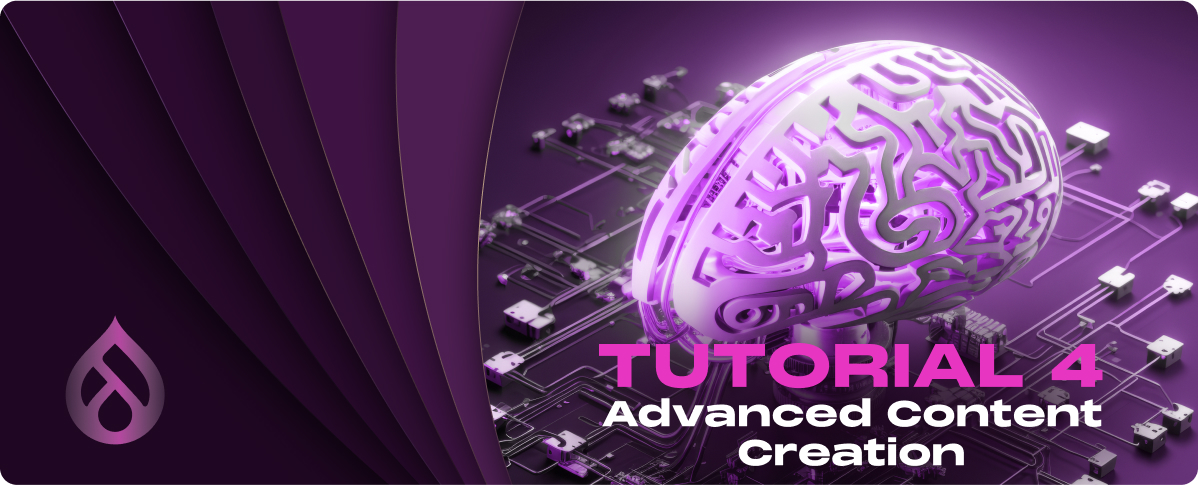Web Services in Drupal
Drupal 8 and later versions come with significant support for web services, making it a fully RESTful platform. This capability allows for the creation, reading, updating, and deletion (CRUD) of Drupal content from external applications, making Drupal an excellent choice for headless or decoupled applications.
Step-by-Step Guide to Creating and Consuming RESTful Resources
1. Enable RESTful Web Services Modules
- Drupal includes several modules for RESTful services, such as RESTful Web Services (rest), Serialization (serialization), and Hypertext Application Language (hal). Navigate to Extend in your Drupal admin toolbar and ensure these modules are enabled.
2. Configure Permissions for RESTful Resources
- Go to People > Permissions. Here, you’ll need to grant appropriate permissions to access and manipulate resources via REST. Look for permissions under “RESTful Web Services” and assign them according to the roles that should have access to REST APIs.
3. Set Up REST Resource Configuration
- REST resource configuration can be configured in the REST UI module (if installed) or by editing the rest.resource.entity.node.yml configuration file directly. Specify which resources are available, the supported formats (e.g., json, xml, hal+json), and the authentication methods (e.g., basic_auth, cookie).
4. Create a RESTful Resource
- Once RESTful services are enabled and configured, you can create resources with which external applications can interact. For example, to expose content of type “Article,” ensure the REST settings for that content type allow GET (retrieve), POST (create), PATCH (update), and DELETE operations.
5. Consume a RESTful Resource
- To consume a RESTful resource, you can use tools like Postman or code in languages like JavaScript or Python. For instance, to retrieve data from your Drupal site, you would make a GET request to the endpoint URL configured for the resource (e.g., http://yourdrupalsite.com/entity/node/1?_format=json).
6. Create Content with a POST Request
- To create content via REST, send a POST request to the endpoint URL with the content data in the request body. Ensure your request headers include Content-Type (e.g., application/json) and an Authorization token if required.
7. Update and Delete Content
- Similar to creating content, you can update existing content with a PATCH request, providing the new data in the request body. To delete content, send a DELETE request to the specific resource URL.
Theme System Improvements
Step-by-Step Guide to Theming with Drupal 10
1. Understanding the Drupal Theme System
- Drupal’s theme system allows you to control the look and feel of your site. Themes include templates, stylesheets (CSS), JavaScript (JS), and other assets. Drupal 10 continues to use Twig as its templating engine, which separates content and data from the layout, making themes easier to develop and maintain.
2. Choosing a Base Theme
- A base theme is a starting point for your custom theme. Drupal 10 introduces a new default theme, Olivero, which is modern, accessible, and responsive. You can choose to create a sub-theme of Olivero or another base theme to leverage its features and styling as a foundation for your customizations.
3. Creating a Sub-theme
- To create a sub-theme, create a new directory in the themes/custom directory of your Drupal installation. The name of your directory will be the machine name of your theme.
- Inside your theme directory, create a .info.yml file (e.g., info.yml). This file declares your theme to Drupal and sets basic properties like name, description, and base theme.
Example mytheme.info.yml content:
name: MyTheme
type: theme
description: ‘A custom theme based on Olivero.’
core_version_requirement: ^10
base theme: olivero
libraries:
– mytheme/global-styling
regions:
header: Header
primary_menu: ‘Primary menu’
content: Content
footer: Footer
4. Adding Stylesheets and JavaScript
- Create a libraries.yml file in your theme directory to define libraries (groups of CSS or JS files). For example, to add global styling:
global-styling:
css:
theme:
css/style.css: {}
Then, create the css directory and add your style.css file with your custom styles.
5. Overriding Templates
- Copy templates from the base theme or Drupal core that you want to override into your theme’s templates directory. You can then modify these templates to change your site’s HTML output. Remember to clear the cache to see your changes take effect.
6. Enable Your Theme
- Go to the Appearance section of your Drupal admin area, find your theme, click Install, and set as default to activate it.
7. Customize Your Theme
- Continue to refine your theme by adding more styles, overriding templates, and utilizing Twig to dynamically display content. Explore Drupal’s theme system documentation and the Twig documentation for more advanced techniques and best practices.
Configuration Management
Step-by-Step Guide to Managing Configuration
1. Understanding Configuration in Drupal
- Drupal’s configuration consists of settings related to how your site functions, such as content types, views, fields, and theme settings. These configurations are stored in the database by default but can be exported to YAML files. This separation of content and configuration aids in the deployment process across different environments.
2. Accessing Configuration Management
- Navigate to Configuration > Development > Configuration synchronization in your Drupal admin toolbar. This page is the hub for all configuration management tasks, including importing, exporting, and synchronizing configurations.
3. Exporting Configuration
- To export your site’s current configuration, click on the Export You can choose to export the entire site configuration or single items. For a full site export, click Export under “Full archive,” which downloads a tar.gz file containing all of your site’s configuration YAML files.
- For exporting specific configurations (e.g., a view or content type), use the Single item tab, select the configuration type and item you wish to export, and then copy the YAML code.
4. Importing Configuration
- To import configurations to your site, navigate to the Import Similar to export, you can do a full site import or single item import.
- Upload the tar.gz file you exported from another environment for a full site import. Drupal will automatically detect any differences and allow you to review them before applying the changes.
- For single items, paste the YAML code into the provided text area and click Import.
5. Reviewing and Synchronizing Changes
- Before changes are applied, Drupal provides a synchronization interface to review what will be updated, added, or deleted, especially for full-site imports. This review step is crucial for avoiding unintended changes.
- If you’re satisfied with the changes, proceed with the synchronization. Drupal will apply the configuration changes to your site.
6. Managing Configurations in Code
- It’s a best practice to keep your configuration in code and under version control. This approach allows you to track changes over time, share configurations across development teams, and restore previous configurations if needed.
- You can use Drupal’s configuration directories settings in settings.php to set a configuration directory outside of your database and web root. This is where you can store your exported YAML files.
7. Using Configuration in Deployment Workflows
- When moving configurations from a local development environment to a staging or production environment, use the export and import process described above. This ensures that your configurations are consistent across all environments and simplifies deployment.
Accessibility Enhancements
Creating Accessible Content and Layouts
Creating accessible content and layouts involves understanding and implementing web accessibility guidelines, such as the Web Content Accessibility Guidelines (WCAG). Drupal provides tools and features that support these efforts, making it straightforward to adhere to best practices.
1. Use Semantic HTML
- Ensure that your content uses semantic HTML markup. This means using the appropriate tags for headings (<h1> through <h6>), paragraphs (<p>), lists (<ul>, <ol>), and other elements. Semantic HTML helps screen readers and assistive technologies understand the structure and importance of your content.
2. Add Alt Text to Images
- Always provide alt text for images. Alt text should concisely describe the image’s content or function. This is crucial for users who rely on screen readers. Drupal’s image fields prompt you to enter alt text when uploading images.
3. Ensure Sufficient Color Contrast
- Color contrast between text and its background is vital for readability, especially for users with visual impairments. Use tools like the WebAIM Contrast Checker to ensure your color choices meet WCAG guidelines.
4. Make Links Descriptive
- Use descriptive link text that indicates the link’s destination or function rather than generic text like “click here.” This helps users understand where a link will take them without needing to read the surrounding text.
5. Create Keyboard-Navigable Menus and Components
- Ensure that all interactive elements, including menus and custom components, are navigable and usable with a keyboard alone. This includes providing focus indicators for active elements.
6. Use ARIA Roles and Attributes Where Necessary
- ARIA (Accessible Rich Internet Applications) roles and attributes provide additional semantics and improve accessibility when HTML alone is insufficient. However, use ARIA sparingly and only when there’s no native HTML alternative, as improper use can hinder accessibility.
7. Test Your Site’s Accessibility
8. Follow Drupal’s Accessibility Best Practices
- Drupal provides guidelines and best practices for creating accessible sites. Familiarize yourself with these resources and incorporate accessibility into your development workflow from the start.
Performance and Caching
Advanced Caching Mechanisms in Drupal 10
1. Cache API
- Drupal’s Cache API provides a flexible system for storing and retrieving data from cache backends. Use the Cache API to cache custom data or computations that are expensive to generate. To finely control cache behavior, you can specify cache tags, bins, and contexts.
2. Cache Tags
- Cache tags are identifiers attached to cache entries, allowing for precise invalidation when the underlying data changes. For example, if a node tagged with node:1 is updated, caches with that tag can be invalidated, ensuring users see the updated content.
3. Cache Contexts
- Cache contexts provide a way to vary cached content based on specific conditions, such as the user’s roles, languages, or themes. This is particularly useful for dynamic sites where content may change based on user interaction or preferences.
4. BigPipe
- The BigPipe module, included in Drupal core, allows for faster initial page loads by using a technique called lazy loading for page elements. BigPipe sends the main page content to the browser first, then streams dynamic parts as they become available. This improves perceived performance for users.
5. Render Caching
- Drupal uses render caching to cache the output of rendered elements. This includes entities, blocks, and views. By default, Drupal intelligently caches these components based on their properties, but you can customize cache settings for custom blocks or views to optimize performance.
6. Dynamic Page Cache
- The Dynamic Page Cache module, enabled by default in Drupal, caches pages for anonymous and authenticated users, taking cache contexts into account. This means that entire pages can be cached and served quickly, even when content varies between users.
7. Internal Page Cache
- For sites with a lot of anonymous traffic, the Internal Page Cache module can cache entire pages for anonymous users without personalized content. This module can significantly reduce response times for such users.
8. Configuration and Best Practices
- To configure caching settings, navigate to Configuration > Development > Performance in your Drupal admin area. Here, you can adjust cache lifetimes, aggregation settings for CSS and JavaScript, and more.
- Always test caching settings in a staging environment before applying them to production. Monitor performance using tools like Google PageSpeed Insights or WebPageTest to identify areas for improvement.













































